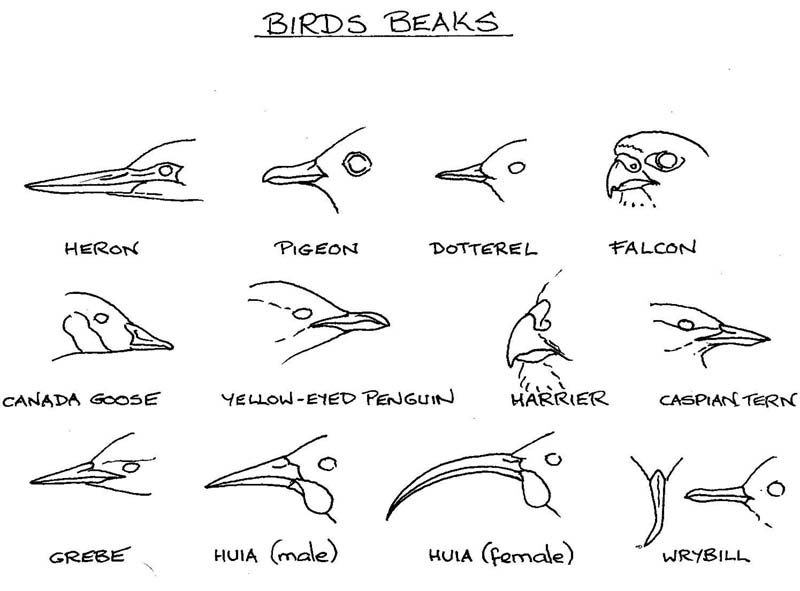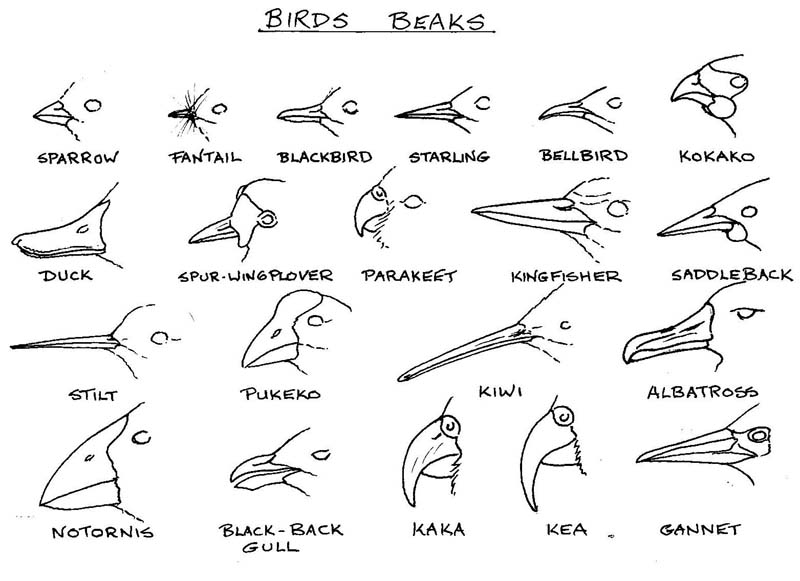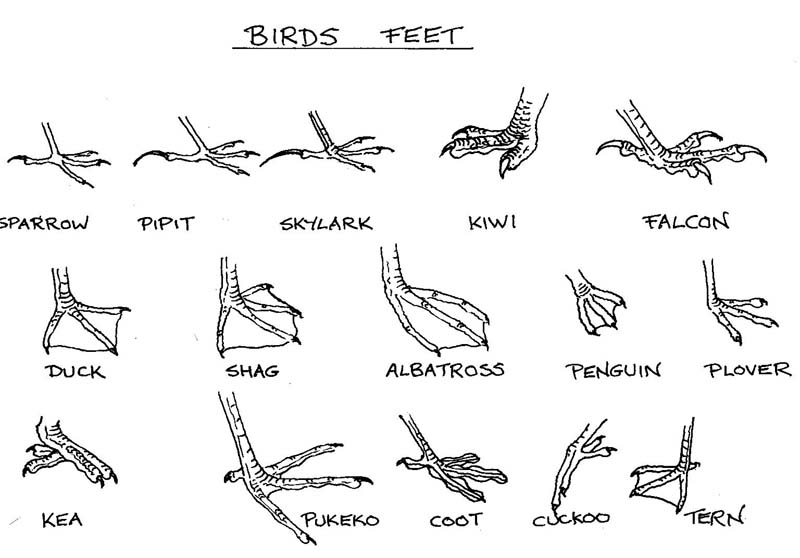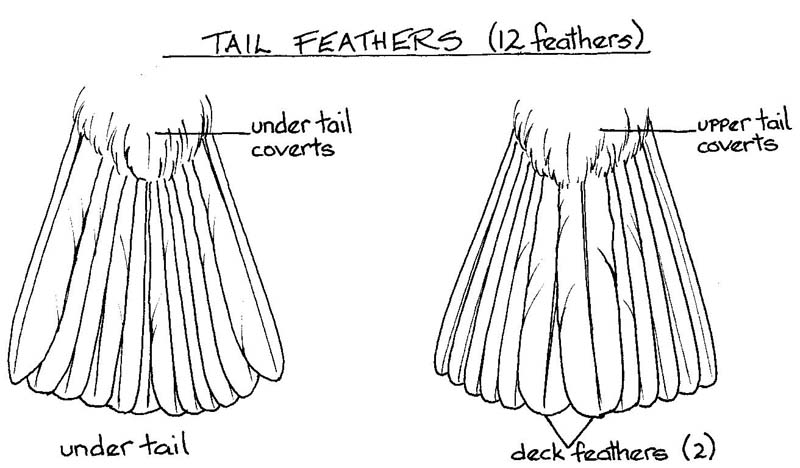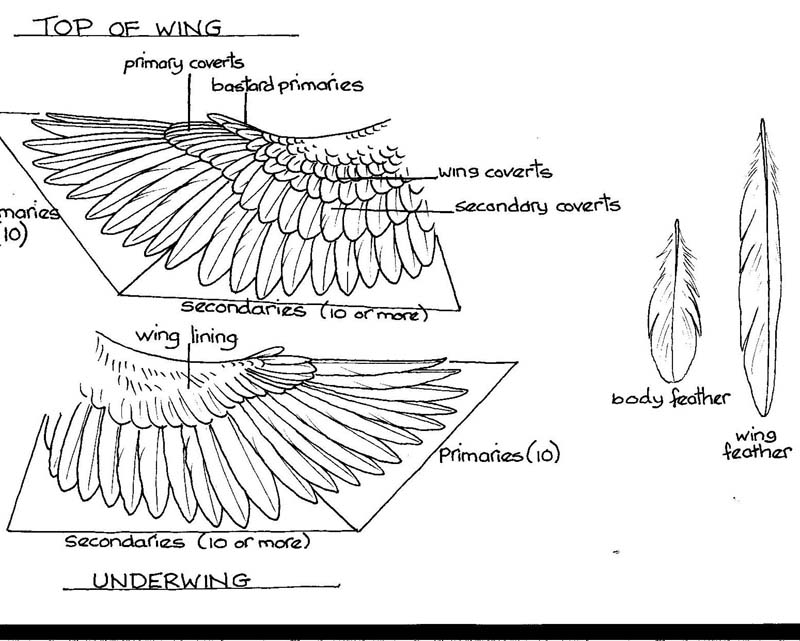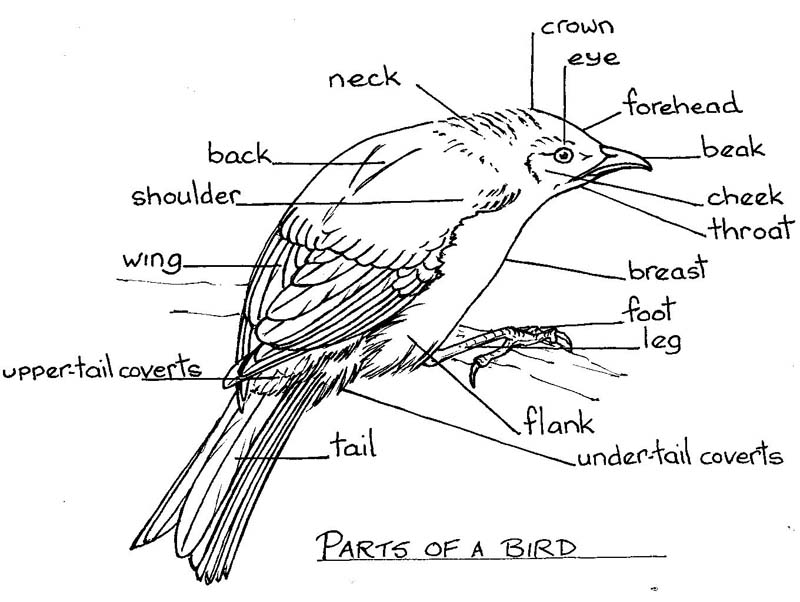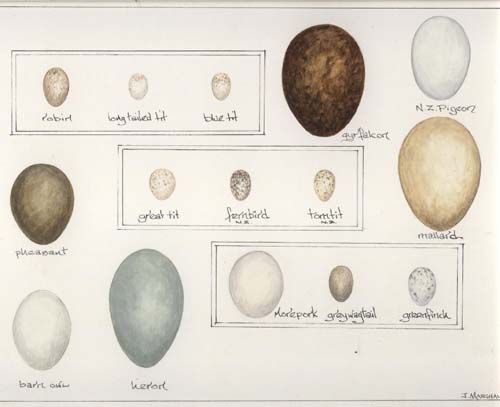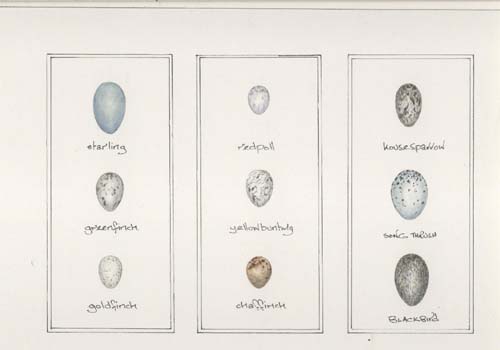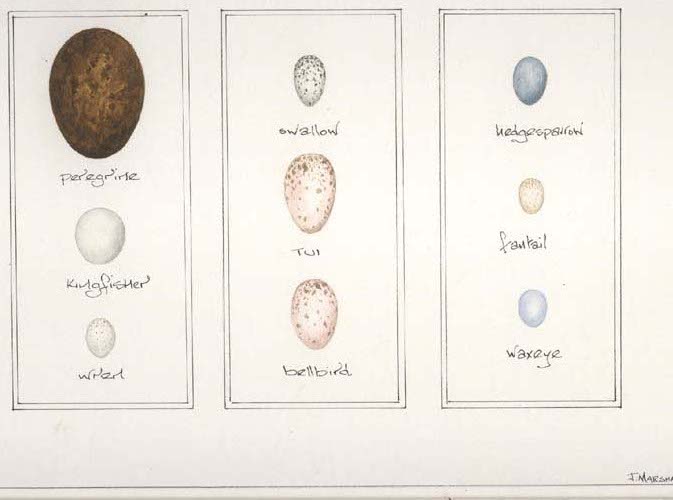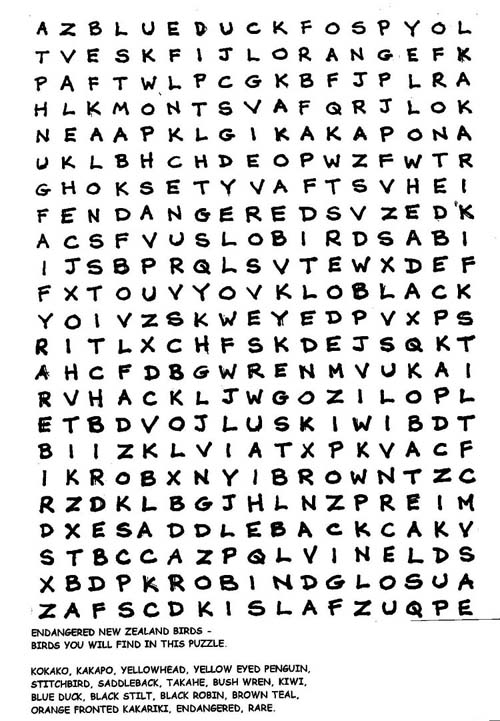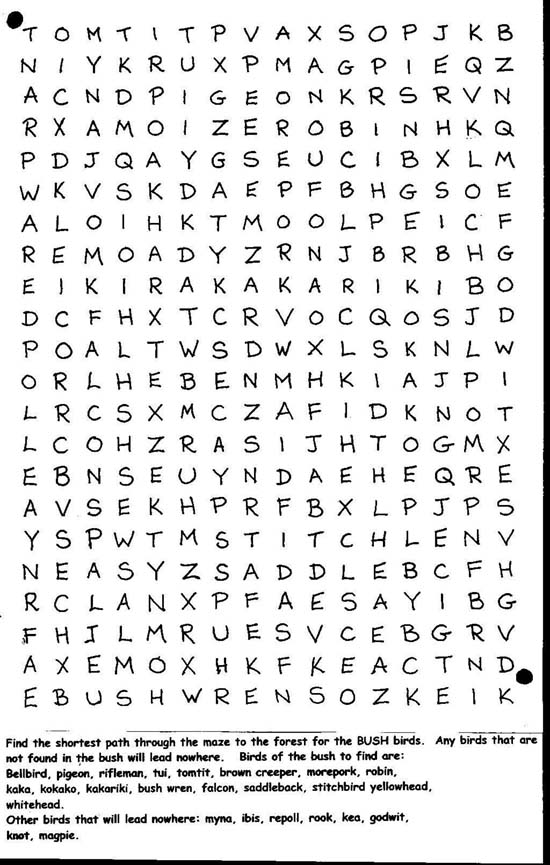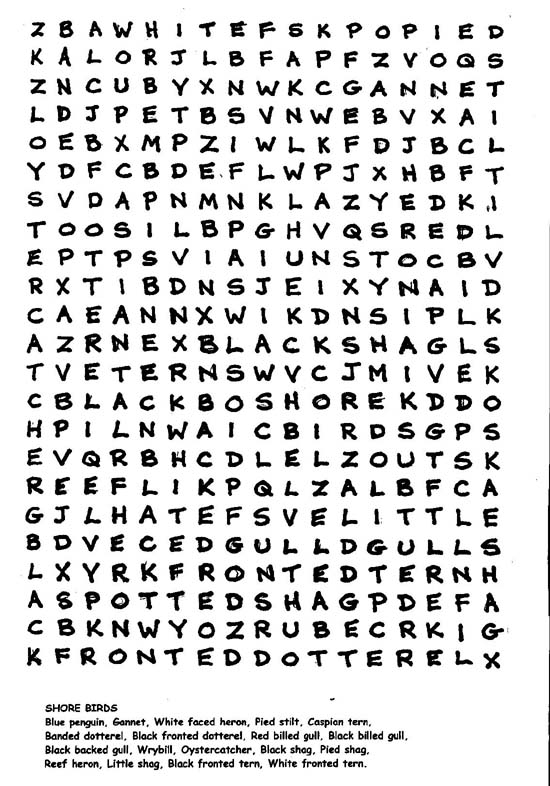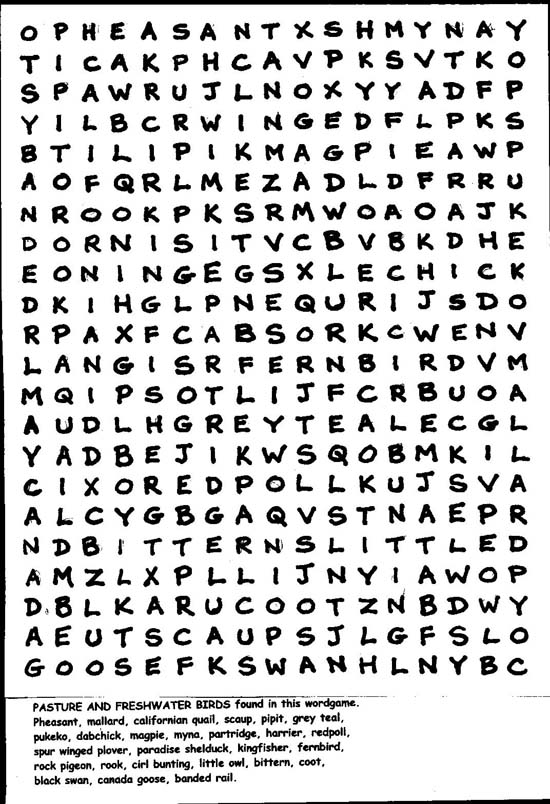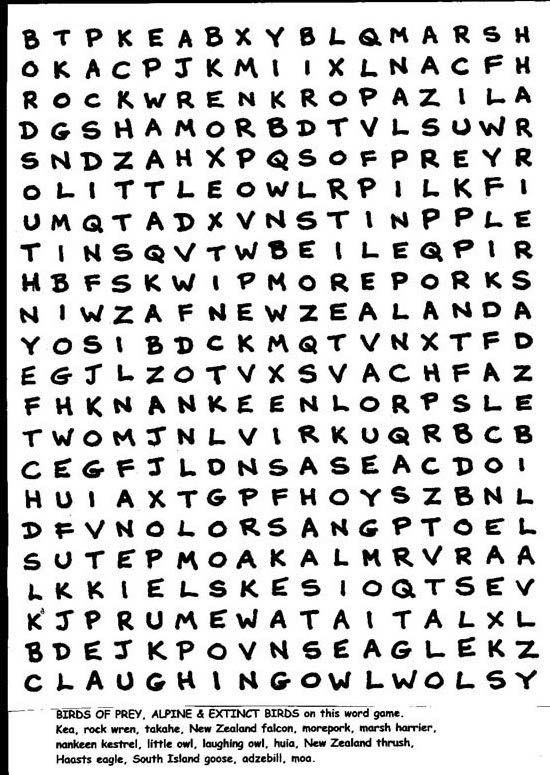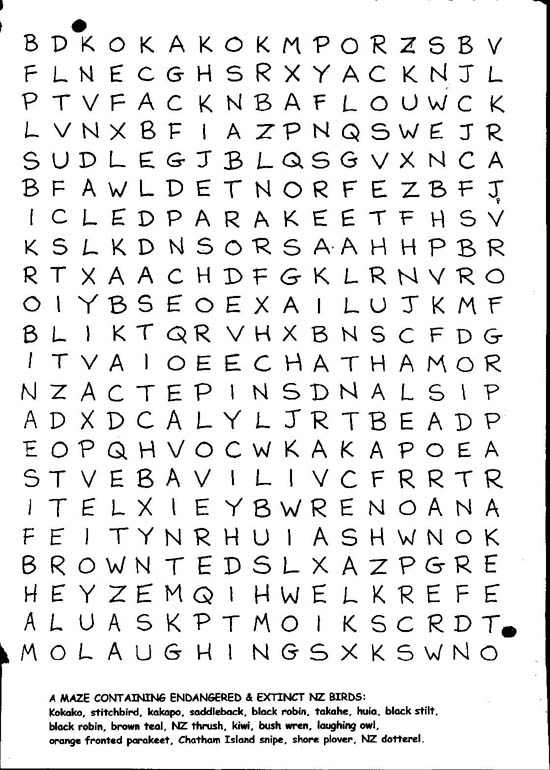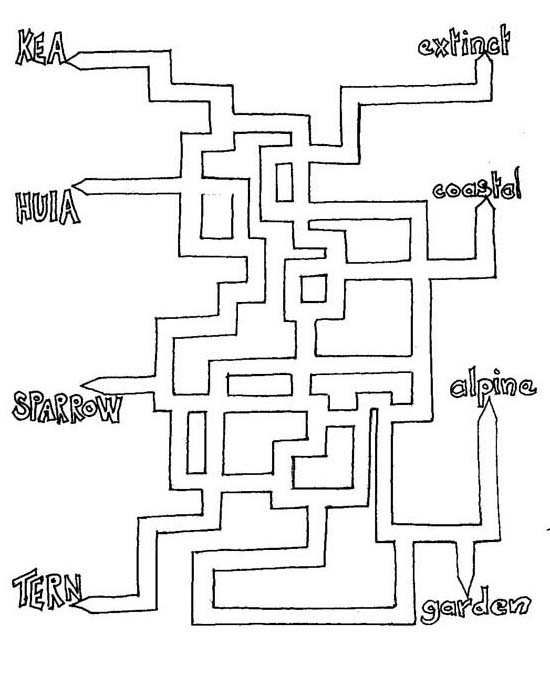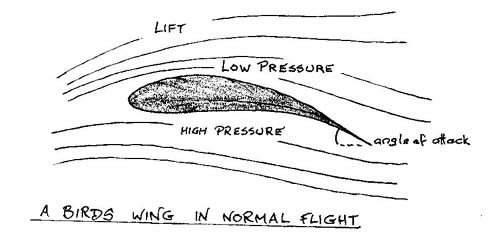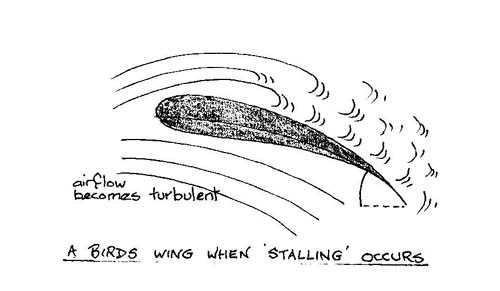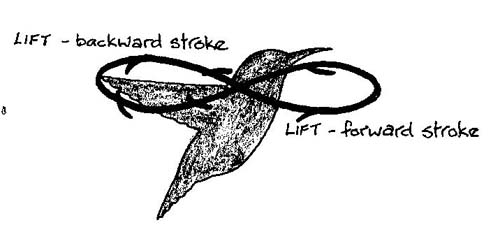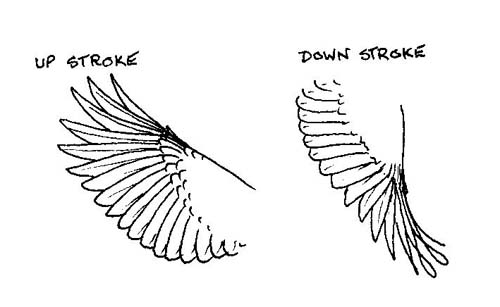
ON THIS PAGE YOU WILL FIND INFORMATION ABOUT
BIRDS IN GENERAL.
THERE ARE PICTURES OF BIRDS WINGS, BEAKS, FEET ETC.
THAT YOU CAN PRINT OUT TO COLOUR. THERE ARE ALSO
WORD PUZZLES AND MAZES TO PRINT OUT AND PLAY.
![]()
Species are divided into four categories:
ENDEMIC: confined solely to the New Zealand region.
NATIVE: naturally occurring in New Zealand, but also found elsewhere in the world.
INTRODUCED: introduced by human agency.
MIGRANT: breeding overseas, but regularly migrating for part of the non-breeding season.
ORNITHOLOGY is the study of birds and a person who does this is called an Ornithologist.
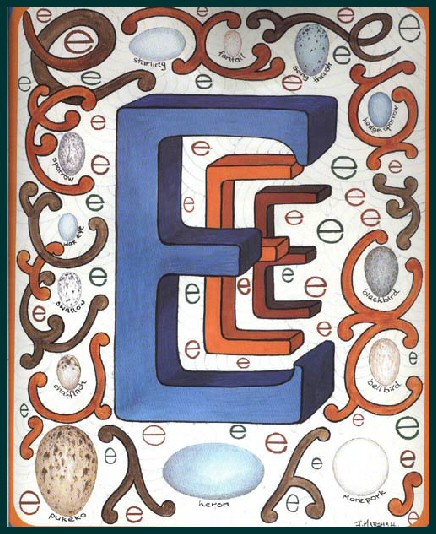
Eggs come in wonderful colours and hue, some of them pink and some of them blue.
Some of them brown and some of them green, and they all seem to glow with a satiny sheen.
They are the jewels of the bird world, each one is unique,
and soon to be broken, by a miniature beak.(from K is for KIWI, Puffin Books)
To print out the pictures below - right click - save image as - print
|
Below are different birds beaks to print out and colour.
|
Some more birds beaks.
|
Below are some of the different feet that birds have. Print them out to colour.
|
|
Tail Feathers
|
Wing Feathers
|
Parts of a Bird
|
|
|
|
|
|
|
|
|
|
Endangered birds word game |
|
|
|
|
|
|
MAZE containing rare & extinct birds |
|
|
|
SCROLL DOWN FOR MORE PICTURES
Birds are warm blooded vertebrate animals. They have feathers, a beak and wings and lay eggs.
Modern birds do not have teeth and some birds do not fly. Some, like the Kiwi and Takahe,
have virtually no wings at all and are totally flightless. Birds that do fly have strong,
hollow bones, a strong heart and a very efficient breathing system. Birds that do not fly may
run fast like the Kiwi or swim in water like the Penguins. Birds like the Falcon are strong fast fliers,
while birds like the Kokako are weak fliers.
Feathers are highly modified scales and different types have different uses. Flight feathers, which are found
on the wings and tail, are hard and strong. Breast feathers and back feathers, however, are soft
and downy underneath for insulation. Male birds are usually brighter coloured than the females,
which enables the male to attract a mate. The female is generally duller in colour to allow camouflage when she is
sitting on eggs. This does not always apply, however, with some males and females being the same and some males
incubating the eggs and caring for the young.
The eggs of birds are hard-shelled, and vary in colour from white to pinks, greens and browns with blotches etc.
Their shape also varies from round (owls and other hole-nesting birds) through to pointed at one end
(gulls, terns and other cliff nesting birds). Hole nesting birds usually lay white eggs, while birds whose nests
are open generally have coloured eggs with blotches, spots or streaks. Some birds, like the Cuckoo, lay their
eggs in other birds nests, the young cuckoo being incubated and raised by the foster parent.
Incubation lasts from 11-12 days for very small birds like the Rifleman, and 30 days for a Swan, and
a chickens egg takes 20-22 days to hatch.
HOW BIRDS FLY
There are two natural forces that a bird must overcome so that it can fly:
Gravity - the force that draws all objects to the ground. (If you let go of an object from your hand,
it will fall to the ground because of gravity.)
Drag - the force that slows things down. (If you move your flattened hand, palm forwards, through the air,
this is the force you feel on the palm or back of your hand.)
|
|
|
If we take a slice through a bird's wing its shape is like a teardrop. This is called an aerofoil.
When an oncoming stream of air hits the leading edge of an aerofoil it splits into two air streams,
one passing over the top of the aerofoil and the other underneath. The air streams below the aerofoil
bunch together forming a higher pressure region whilst those above spread apart to form a lower
pressure region. The difference in pressure above and below the aerofoil creates lift.
Each primary feather can be rotated and several outermost primaries turn forward,
with the leading edge of each low and acting as small seperate propellers.
|
|
|
Moving Forwards
Thrust is the force required to overcome drag and drive the bird forwards.
The bird must generate a force, called LIFT, that pushes it away from the ground,
and another force called thrust that pushes it forward through the air. If we watch a large
bird that has a slow wing beat, such as a heron, we can see that the wing is not simply
flapping up and down. On the downstroke, the wing tip moves downwards and slightly forwards
and on the upstroke the tip also moves backwards.
There are many different wing shapes, depending on the species of bird and its habitat and lifestyle.
Some wings are suited to short bursts of flight, others for long flights over oceans.
Some, like harriers, are made for soaring, while a hummingbirds wings allow it to fly backwards.
Short, rounded wings are found on birds that only fly short distances, such as kokako and pheasant.
Long, pointed wings are found on fast flying birds such as falcons and swallows.
TAILS
A bird uses it's tail for steadying itself in flight and uses it as a flap to slow down
the air speed without stalling.
Some birds fly in mainly straight lines, while others make sharp turns in flight.
Tails acts like a rudder, the feathers opening and closing like a fan, moving up and down
and twisting from left to right.
Birds can also 'bank' by tilting one wing higher than the other or by beating one wing
slightly faster than the other.
Most songbirds fly about 40-50kms per hour and some shorebirds are suspected of reaching nearly
160kms per hour. The Peregrine falcon is considered to be the fastest bird, reaching up to 300kms per hour
FEATHERS
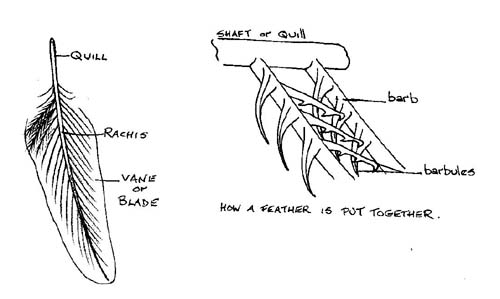
Feathers are one of the main features features of a bird, and they are unique to birds. Every bird has
feathers and everything that has feathers is a bird . Feathers perform a number of functions for a bird.
First, they provide insulation, and this is very important in a warm blooded animal. The body temperature
of most birds must be kept at around 40C. It is believed that prehistoric birds developed feathers to keep
themselves warm. They also protect birds from UV light.
Secondly, feathers allow for flight. The shape of feathers enable it to utilise air flow.
Thirdly, feathers control what a bird looks like. A bird without feathers would not look nice and
would not live long. Feathers provide warmth, colour for camouflage, sexual characteristics and sexual display.
Feathers evolved from reptilian scales, and birds still have scales on the lower parts of their legs and feet.
/td>
nbsp;












